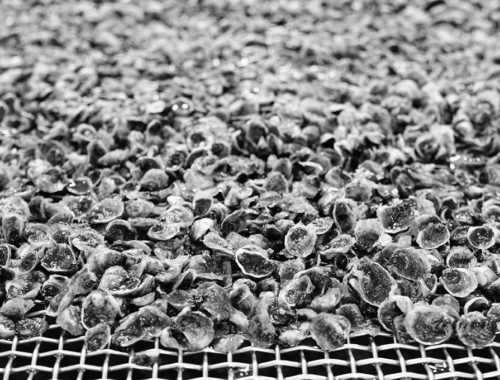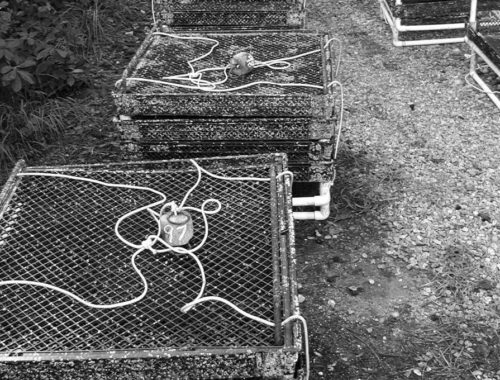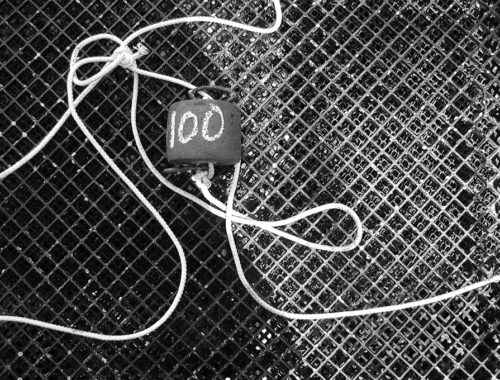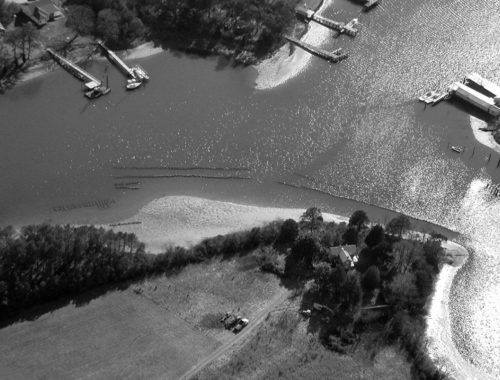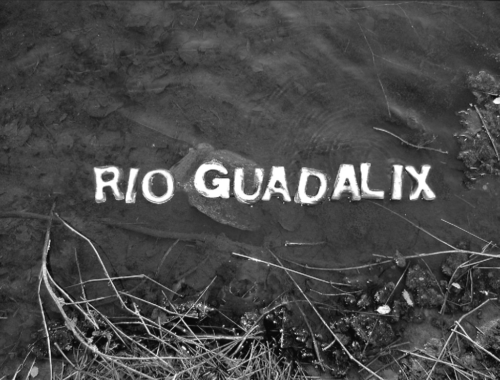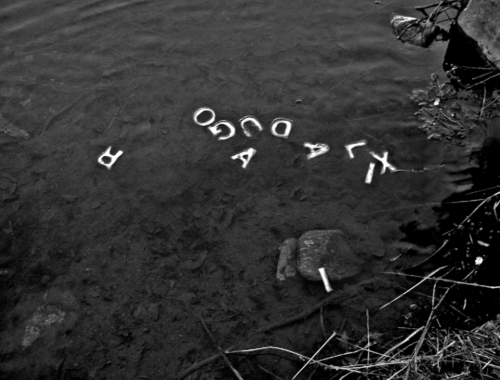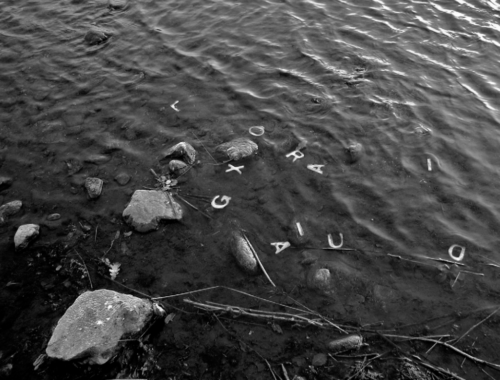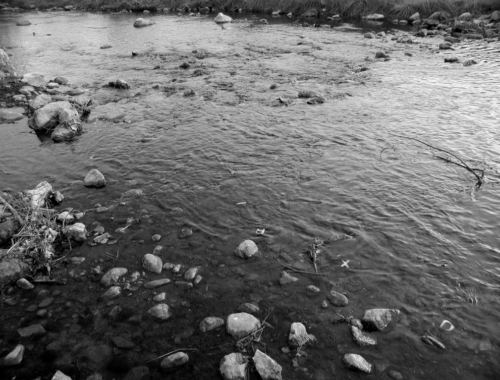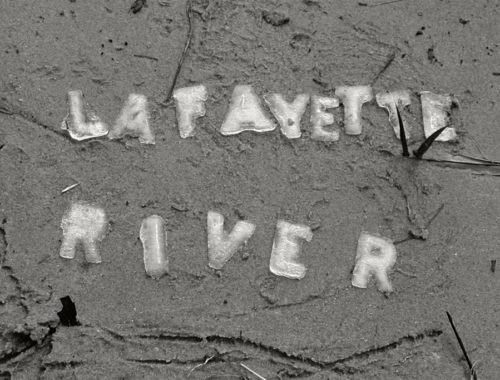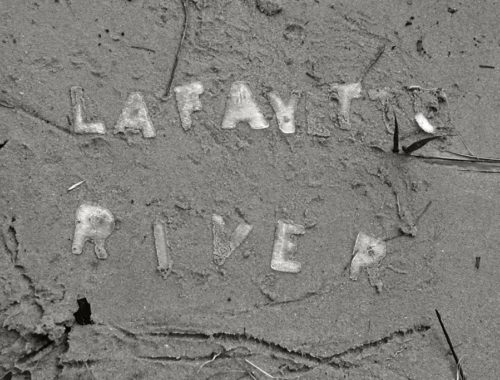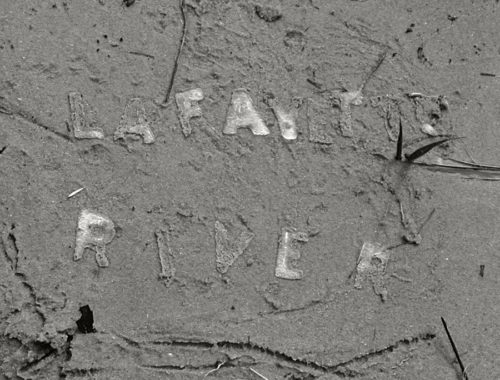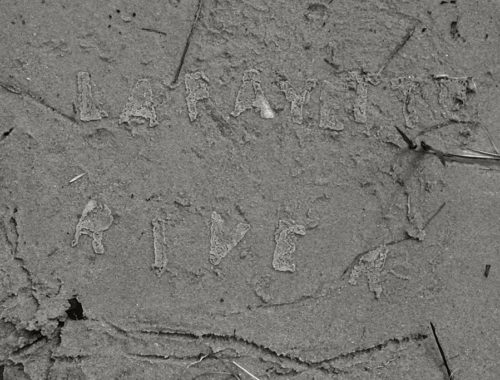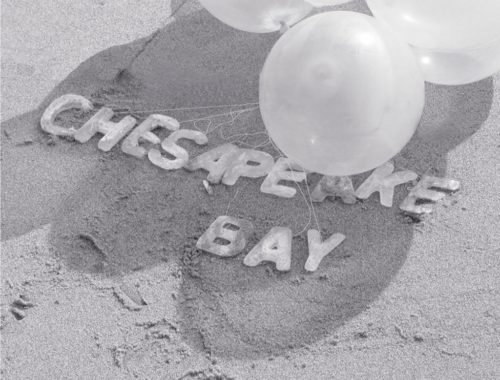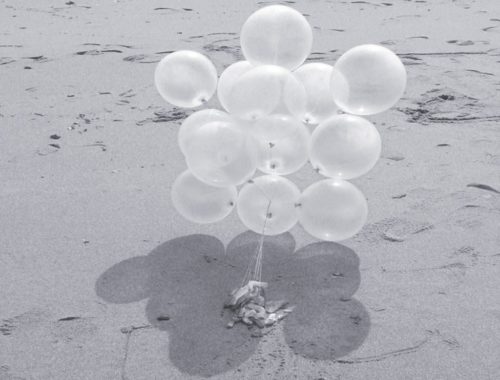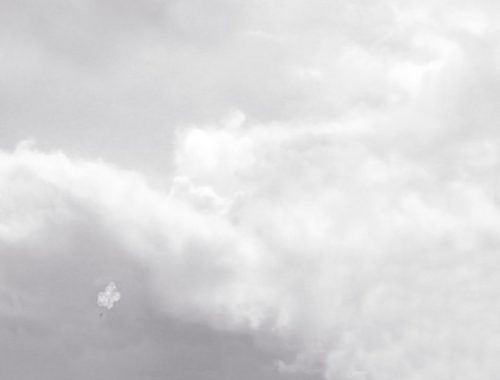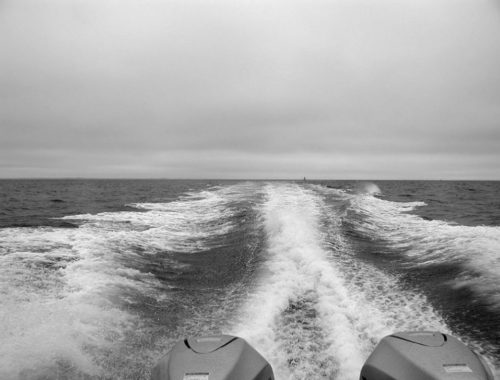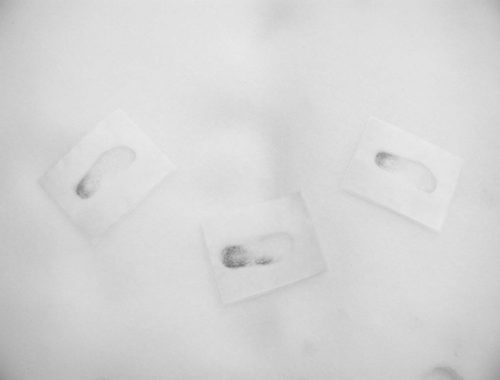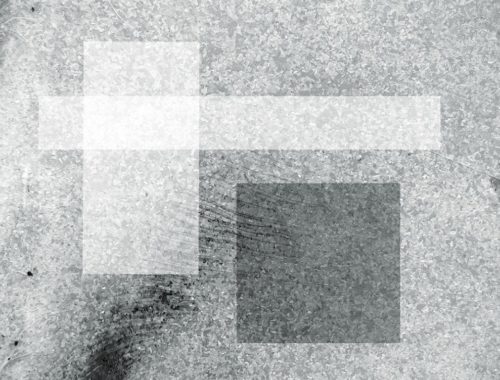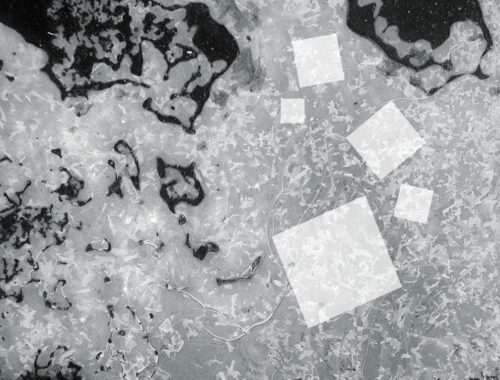SITE INTERPRETATION & ECOLOGICAL ART
Project & Photos Rosa Doughty. The line, one of the five art elements used in visual communication, has shaped our existence as a species. Beginning with the origins of art, the complex human emergence of expressing ideas through mark-making, lines have served different purposes: perspectival, magio-religious, contemplative, and even disciplinary. Influenced by earth art tendencies of the 1960s, this oyster restoration project relates to the use of lines as concept-based earthworks, specifically on lines drawn in bodies of water. These lines drawn in the Chesapeake Bay with 2 million oysters serve to implement remediating strategies in a damaged ecosystem. Lack of oxygen, diseases, and overharvesting have nearly made extinct the native species. At 2% of the original oyster population (100% being before Western Settlement), the planted oysters and recycled shell reefs as in situ line drawings will filter the water, create more oxygen, and produce more oysters. Beyond being scientific, this project serves as a metaphor for the damaged ecology. This vast-in-scale earthwork is subject to environmental changes in temperature, light, wind, erosion, and other natural properties which contribute to the conceptual component of the work.
SITE INTERPRETATION & EPHEMERAL ART
This photographic sequence documents the process of sculpted ice-letters that spell the name of the river slowly drifting while melting downstream. The end result is scrambled language signifying nothing. My deliberate actions of placing the letters in the river coupled with nature’s random yet some-what predictable physical properties has a twofold meaning. For one, water, although named by humans as territory in an attempt to ascribe place, knows no name or author. Therefore, the river as we know it through language, story, and thought is a mental construct as intangible as writing text on water. The work also illustrates the passage of time in our personal experience, physical and physicical, as it occurs in our environments, human or nonhuman, animate or inanimate. Time, as we know it, is linear, a one-way flow (metaphorically speaking, as the activity “flow” pertains to fluids) at a pace that is slow enough to be perceptible. The river flow carrying melting ice illustrates the fluidity of this limited perception, as past, present and future exist in a, theoretically speaking, asymmetrical universe.
Connecting the Chesapeake Bay to the Atmosphere, Ocean View, Norfolk, Virginia. Multi-media: Ocean View is the site where all the tributaries of the Chesapeake Bay watershed join. The confluence can be interpreted as all water, including gas and solid states, being interconnected. To articulate this phenomenon visually, ice letters made from Bay water were put on balloons and sent up to the atmosphere as a symbol for the ongoing evaporation and precipitation process. The process can also be interpreted as allegorical.
Snow Prints (Photo of Photos), Norfolk, Virginia. Multi-media: Rarely does it snow in Norfolk. The ocean’s blanket covers the city in the winter. When it does snow, a site becomes a place to examine past journeys through footprints–indexical signs marking a walk by someone unknown to me but who walked the land before me. The footprints are photographed, printed, and placed on the snow as more tangible, thawless reminders.
Frozen Paper Compositions 1 & 2, Norfolk, Virginia. Multimedia: Homages to Suprematism (more to come).
